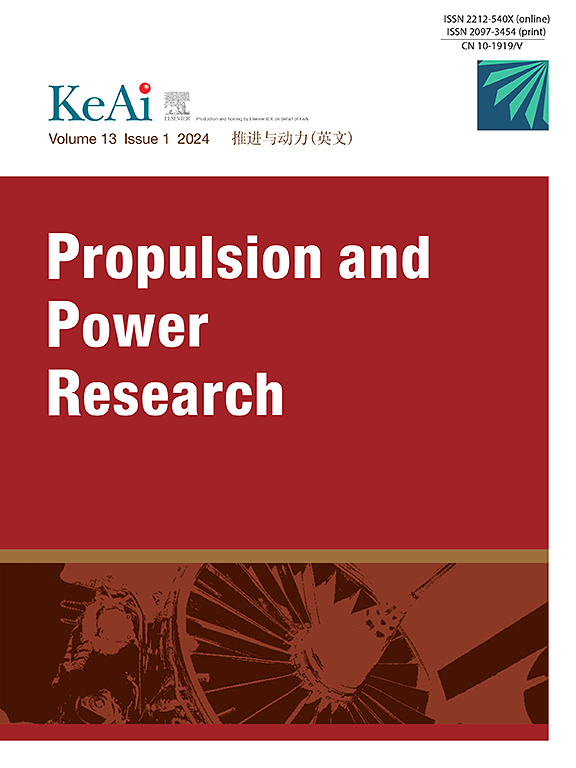Multi-fidelity modelling of a high bypass ratio turbofan engine with variable area nozzle
IF 5.4
2区 工程技术
Q1 ENGINEERING, AEROSPACE
引用次数: 0
Abstract
Low pressure ratio fans of modern civil turbofans suffer from reduced stall margin in the take-off operating line and at part-speed, requiring variable geometry devices. Variable area nozzles (VAN) are one of the investigated solutions to control engine operating conditions throughout the mission. In this paper, we present a multi-fidelity modelling approach for an ultra-high bypass ratio turbofan engine with a VAN, combining a zero-dimensional thermodynamic cycle simulator using a realistic fan map with two- and three-dimensional detailed computational fluid dynamics (CFD) simulations for internal/external flow coupling. By adopting a novel algorithm to match the cycle conditions to the CFD solutions, the propulsive performance of the turbofan is analysed in a reference aircraft mission. The numerical method captures the effect on thrust generation and nacelle drag, providing a more reliable estimation of the impact of VAN on engine operation and efficiency. Low-speed mission points are confirmed to be those that benefit the most from an enlarged fan nozzle area, with a possible improvement of 3% in terms of thrust and specific fuel consumption at take-off and approach using a 10% larger area, similarly predicted by both 2D and 3D models. A preliminary acoustic evaluation based on semi-empirical noise models indicates a modest effect on noise emissions, with up to 1 dB reduction in microphone signature at the sideline for a nozzle area increased by 10%.
带变面积喷管的高涵道比涡扇发动机多保真度建模
现代民用涡扇低压比风扇在起飞操作线和部分转速时存在失速余量减小的问题,需要采用可变几何装置。变面积喷管(VAN)是在整个任务过程中控制发动机运行条件的研究解决方案之一。在本文中,我们提出了一种具有VAN的超高涵道比涡扇发动机的多保真建模方法,将使用真实风扇图的零维热力学循环模拟器与内部/外部流动耦合的二维和三维详细计算流体动力学(CFD)模拟相结合。采用一种新颖的算法将循环条件与CFD解匹配,分析了参考飞机任务中涡扇发动机的推进性能。该数值方法捕捉到了对推力产生和机舱阻力的影响,从而更可靠地估计了VAN对发动机运行和效率的影响。低速任务点被证实是那些从扩大风扇喷嘴面积中受益最大的地方,在起飞和进近时,使用10%的面积,推力和比油耗可能提高3%,这与2D和3D模型的预测相似。基于半经验噪声模型的初步声学评估表明,对噪声发射有适度的影响,喷嘴区域边线的麦克风特征降低了1 dB,增加了10%。
本文章由计算机程序翻译,如有差异,请以英文原文为准。
求助全文
约1分钟内获得全文
求助全文
来源期刊

Propulsion and Power Research
Multiple-
CiteScore
7.50
自引率
5.70%
发文量
30
期刊介绍:
Propulsion and Power Research is a peer reviewed scientific journal in English established in 2012. The Journals publishes high quality original research articles and general reviews in fundamental research aspects of aeronautics/astronautics propulsion and power engineering, including, but not limited to, system, fluid mechanics, heat transfer, combustion, vibration and acoustics, solid mechanics and dynamics, control and so on. The journal serves as a platform for academic exchange by experts, scholars and researchers in these fields.
 求助内容:
求助内容: 应助结果提醒方式:
应助结果提醒方式:


